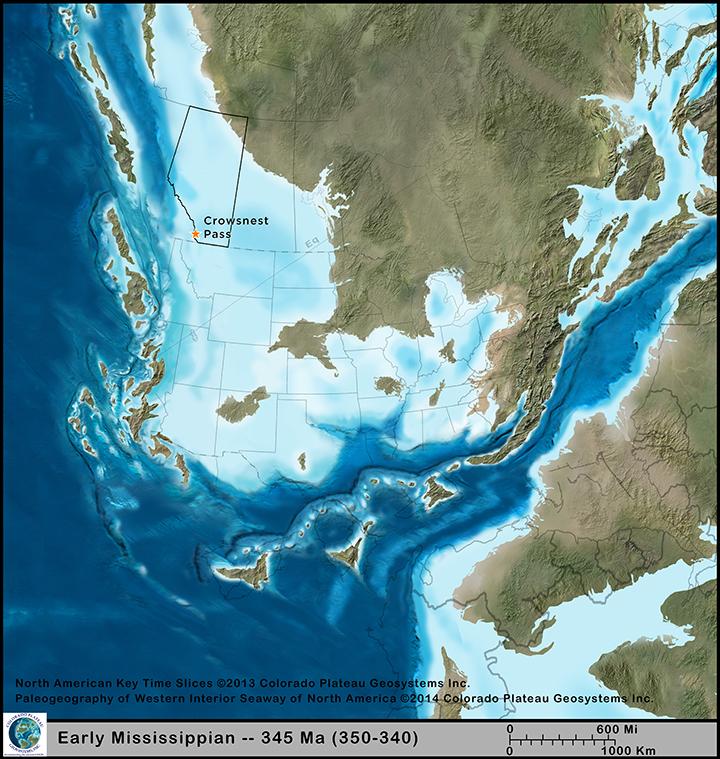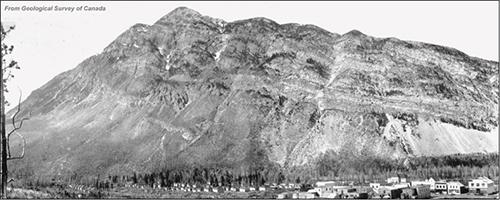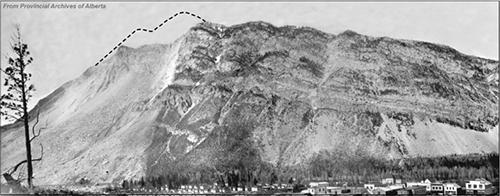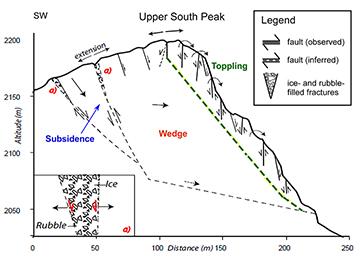One of Canada’s Largest Modern Rockslides
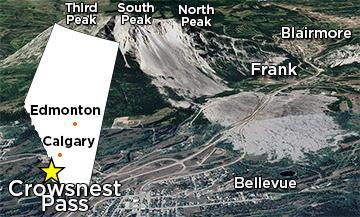
One of Canada’s largest modern rockslides occurred on April 29, 1903, at 4:10 a.m. on Turtle Mountain in the Crowsnest Pass, which is approximately 250 km south of Calgary, in southwestern Alberta. Approximately 30 million m3 (82+ million t) of rock buried a portion of the town of Frank, killing more than 70 people. This catastrophic failure of Turtle Mountain is known as the Frank Slide. Since then, various government groups, universities, and geotechnical consulting companies have been studying the potential of a second slide.
The History and Geology of Turtle Mountain and Frank Slide
Geology of Turtle Mountain
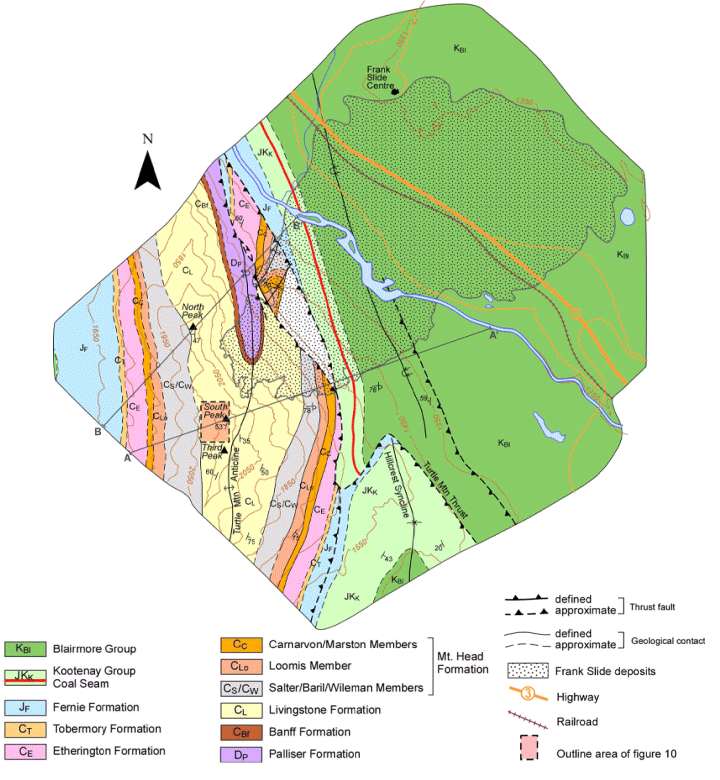
Devonian to Cretaceous aged rock layers make up the geology of Turtle Mountain and the surrounding Crowsnest Pass region with Paleozoic carbonates and Mesozoic clastics. On April 29, 1903, more than 30 million m3 (more than 82 million t) of limestone rock broke away, leaving a rockslide scar about 1 km wide and 425 m long on Turtle Mountain. The majority of the rock-slide material from the Frank Slide is from Paleozoic limestone of the Livingstone Formation.
The Turtle Mountain coal seam is located at the foot of Turtle Mountain and is part of the Kootney Group, which consists mainly of sandstone, siltstone, and shale. The Frank Mine produced coal starting in 1901 and ceased mining in 1917, then officially closed later in 1918. During the Frank Slide the mine entrance was buried under the debris causing the trapped miners to have to dig out at a near-vertical angle.
Turtle Mountain contains many structural geology components that include folds, faults, and fissures. More notably are the Turtle Mountain Anticline and Thrust Fault that give the mountain its unique landscape and structural geometry. Turtle Mountain also has deep cracks (open fractures) known as fissures. These fissures range in size and depth, and some are over 30 m deep and 4 m wide on South Peak. The geological structure of Turtle Mountain is believed to be the main reason the Frank Slide occurred.


